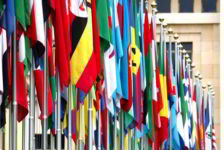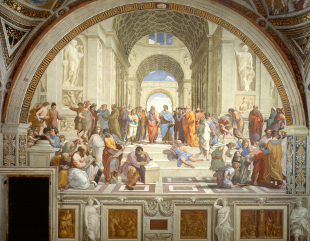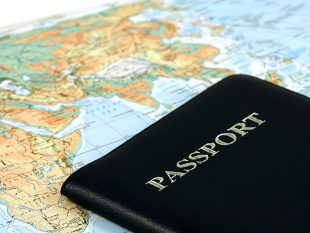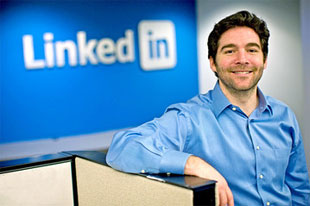 Global culture continues to be shaped by world cities – now is the time for them to link up, reports Yasmin Khan
Global culture continues to be shaped by world cities – now is the time for them to link up, reports Yasmin Khan
What makes a world city? According to British Museum director Neil MacGregor, it’s not cultural integration in London’s case, but a determined fostering of diversity.
His comments came in the keynote address of the World Cities Culture Summit on 1 August at London’s City Hall, which saw the launch of the World Cities Culture Report 2012, an international survey analysing the range of cultural assets and activities that are produced and consumed in 12 major cities: Berlin, Istanbul, Johannesburg, London, Mumbai, New York, Paris, São Paulo, Shanghai, Singapore, Sydney and Tokyo.
The report, produced by BOP consulting, is a substantial body of knowledge, packed full of revealing statistics and newly gathered data as well as pen portraits of each city alongside commentary to contextualise the findings. Its conclusion: that alongside finance and commerce, culture is the defining cornerstone that establishes a city as a powerhouse within the global economic system.
The crux of the summit was MacGregor’s compelling keynote. The British Museum is currently the most visited museum in the UK, attracting more than 5.8 million visitors in the past year. While some might say the British Museum was born out of empire, we were reminded how the museum was established as a consequence of the first global economy in the mid-18th century as a place where any global citizen can visit to gain insight on the interconnected network of human cultures throughout history.
World cities are able to support the widest range of cultural activity because of their scale and diversity of people. Instead of forcing cultural integration, suggested MacGregor, London fosters diversity, enabling multiple cultural heritage identities to co-exist, producing art that is unique yet none-the-less inherently British. Hybridised art forms then emerge when ideas are blended together fuelled by their constantly changing populations and international connections – this forward-thinking approach is not a new argument but one that is more likely to succeed if universally embraced.
MacGregor’s words resonate in the context of London 2012. The opening ceremony of the Olympics was a celebration of the rich and continuously evolving nature of our cultural landscape. London is proudly portraying itself as a dynamic and heterogeneous environment where innovation thrives. MacGregor also emphasised that having a strong leader who enables a city to be cosmopolitan is crucial – commercial exchange and cultural exchange go hand in hand and it is the leader of a world city who lies at the helm of these transactions. Even if he gets stuck on a zip-wire from time to time.
Boris Johnson wasn’t there to personally enjoy the summit but MacGregor did show us a colourful PowerPoint slide show that included the Tower of Babel, ancient Vienna and images of the London mayor juxtaposed with other historical leader figures. It went down a treat with delegates and removed the impression that this event was simply a cheer-leading exercise.
The ensuring plenary sessions reflected the nuances of different national cultural policies. Dr Bilgili, director of Istanbul’s provincial directorate of culture and tourism acknowledged the challenge of balancing tradition with modernity and ensuring that both are valued in the context of Istanbul’s young dynamic population and its rich history and architecture.
Kate Levin, commissioner from the New York City Department of Cultural Affairs explained the heavy investment in the arts and culture is most likely to be sustained through continued public-private investment and endowments from wealthy philanthropists.
Professor Huang, vice-president of Shanghai Theatre Academy touched on how the city embeds culture in public policy via a five-year development plan that aims to use culture as a way of positioning the city as a global metropolis by 2020. Culture is viewed as a source of cohesion in China’s rapidly changing environment.
Rachel Healy, head of culture for the city of Sydney, highlighted they have more festivals and events than any other ‘World City’ and this boosts other economic areas, for instance outdoor dining, in Australia’s rich informal culture. And Yusaku Imamura from Tokyo Metropolitan Government explained how the 2011 Japanese earthquake prompted a reappraisal of values and culture to be put at the heart of its future revival as reflected in its cultural infrastructure and participation.
Delegates to the summit arrived a day earlier to sample the treasures of London’s cultural sector. Their itinerary included tours of the Royal Opera House and the fantastic Thomas Heatherwick exhibition at the V&A. Invited guests on the day included the great and good of London’s flagship art institutions, including the Royal Opera House, National Portrait Gallery, National Theatre and the London 2012 Festival.
London based arts organisations will be able to see where they feature in the World Cities report and which matrices they contribute to. For instance London has over 1,000 museums and art galleries – more than the other world cities surveyed – and the highest level of attendance. Public participation in the arts is a key strength of the capital reflected across engagement with libraries, film and performance. Arts organisations now need to come together to absorb and reflect upon the findings and perhaps use as a goal post for future activities.
The summit signalled a desire to cement closer co-operation between the partner cities and there was also talk of expanding the membership of the forum to other world cities wishing to join. The intention is to update the data every three years and rotate future summits between forum members. In the meantime global culture will continue to be shaped by world cities, each with their own individual strengths and each serving as inspiration to the others.
Source: The Guardian
 Turkish Labor Law
Turkish Labor Law


